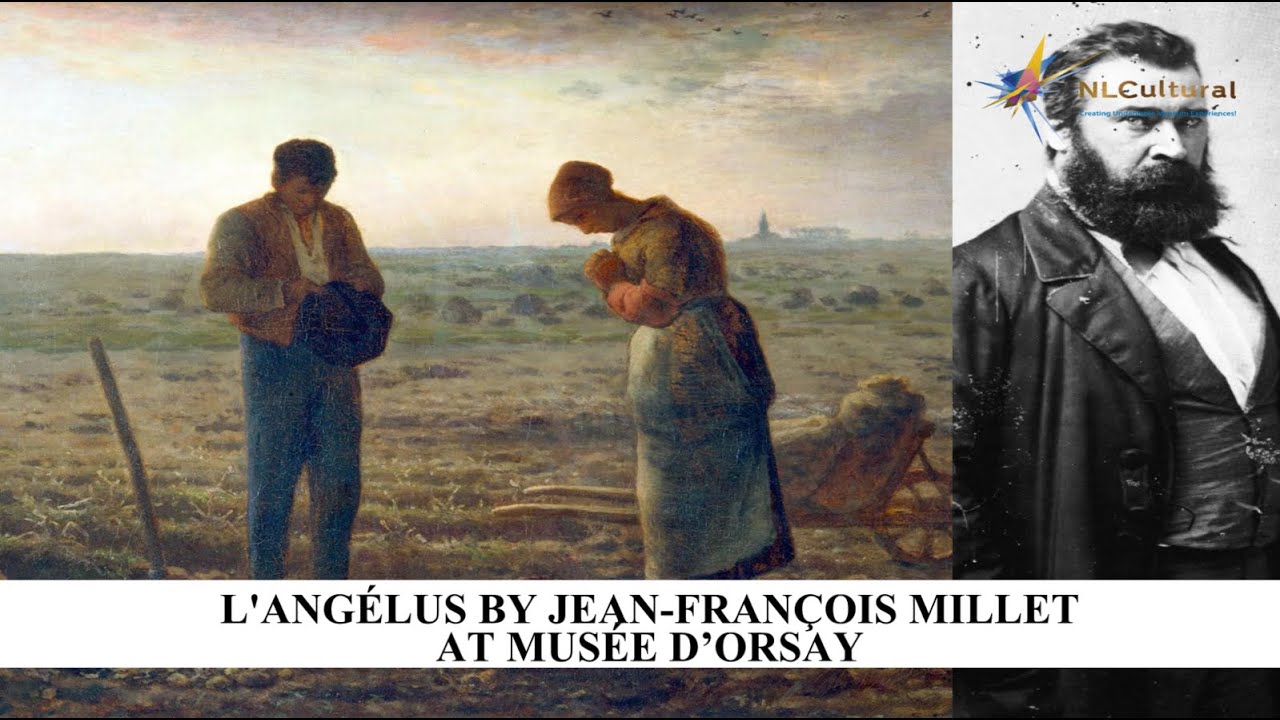
Robert Draws – Millet’s ‘The Angelus’ is now the centerpiece of a compelling new exhibition at the National Gallery in London. The showcase titled Millet Life on the Land brings together a rare collection of the artist’s works that portray rural life in France. Visitors can view not just celebrated paintings but also drawings and studies that highlight the rawness and depth of Millet’s vision. While his pastoral scenes might seem serene on the surface the exhibition aims to uncover the darker truths of peasant life. Hardship labor and faith are central themes throughout the display. By curating these pieces together the National Gallery provides a rare opportunity to explore how rural communities were represented with both reverence and realism. Audiences are encouraged to look beyond the calm imagery and reflect on the quiet struggles that shaped the lives depicted.
At the heart of this exhibition lies the hauntingly beautiful Millet’s ‘The Angelus’ on loan from the Musee d’Orsay. This iconic painting portrays a man and a woman standing in prayer over a wheelbarrow in an open field. While often interpreted as a moment of devotion the context suggests something deeper. In this exhibition the painting is re-examined through a lens of loss and hardship. Curators have invited viewers to question the deeper emotions conveyed through muted tones and body language. Millet’s ‘The Angelus’ is surrounded by works that emphasize similar themes of endurance under daily strain. This reframing of the painting opens new perspectives on the emotional intensity behind such seemingly quiet scenes. The viewer’s experience is enriched by this layered interpretation prompting thought beyond the initial aesthetic appeal.
“Read about: From Empty Rooms to Timeless Masterpieces, Picasso’s World Comes Alive!”
The gallery’s decision to focus on rural life highlights not only Millet’s mastery in technique but also his social awareness. The peasant subjects are not romanticized but portrayed with dignity amid difficulty. Labor-intensive scenes show figures bent under the weight of their work framed by expansive but often bleak landscapes. These compositions reveal how poverty and piety coexisted in the countryside. This contrast between beauty and suffering is striking and intentional. Millet was a pioneer in making the rural poor visible in art a bold move during a time when such subjects were marginalized. In the context of this exhibition his focus on everyday people is more relevant than ever. The hardship in each canvas is made more potent by the quiet simplicity of its execution inviting reflection rather than pity.
“Read more: Make Authentic Japanese Sushi at Home Like a Pro Chef”
Millet influences artists far beyond 19th-century France. His works inspire creators like Van Gogh and Salvador Dali. Dali famously reimagines Millet’s ‘The Angelus’ with surreal elements. The National Gallery adds context by showcasing related artworks. These works highlight Millet’s impact on future generations. The exhibition creates a conversation across artistic eras. Millet becomes more than just a painter of rural life. He stands as a visionary for artistic thought. His influence continues to grow through modern interpretations. This artistic legacy evolves with each generation.
The exhibition reminds visitors of shared human experiences. Themes of struggle and reflection remain powerful today. Millet’s art bridges the past and present effortlessly. His subjects speak to viewers across time. The gallery invites deeper reflection through visual connections. New perspectives renew the meaning of familiar images. Millet’s relevance proves enduring and global. The emotional weight in his work still resonates. Artists respond with admiration and reinterpretation. This enduring dialogue gives the exhibition profound impact.
This exhibition is also a triumph of curatorial insight. The thoughtful arrangement of works guides the viewer through a narrative journey from the romantic notions of rural life to its often-overlooked realities. Lighting spatial design and contextual notes play a significant role in shaping the emotional tone of the visit. Through subtle cues and visual storytelling the curators have created a space that challenges preconceived ideas. The experience encourages deeper engagement not just with Millet’s ‘The Angelus’ but with every work on display. By carefully framing these works the exhibition elevates the viewing experience into something contemplative and transformative. Visitors leave not just having seen great art but having participated in a quiet revelation about history humanity and the power of perspective.